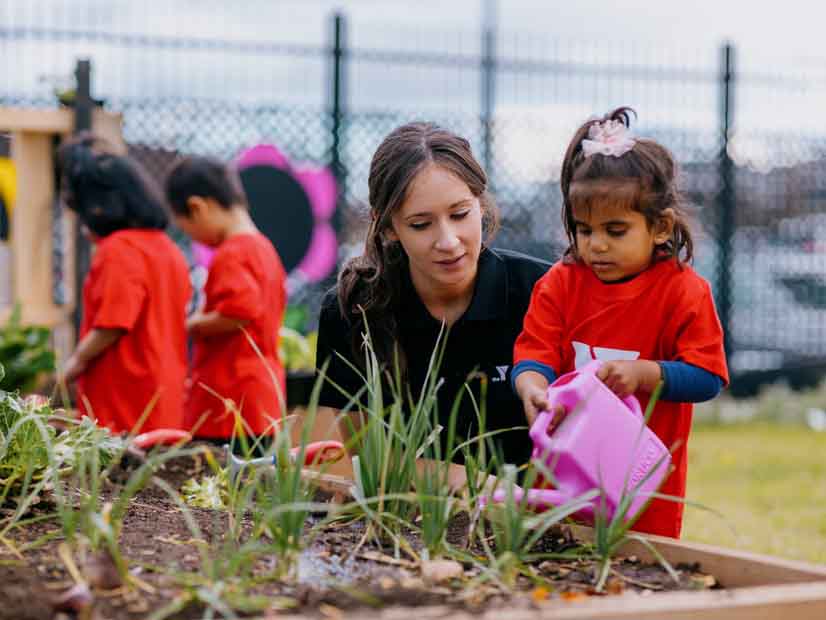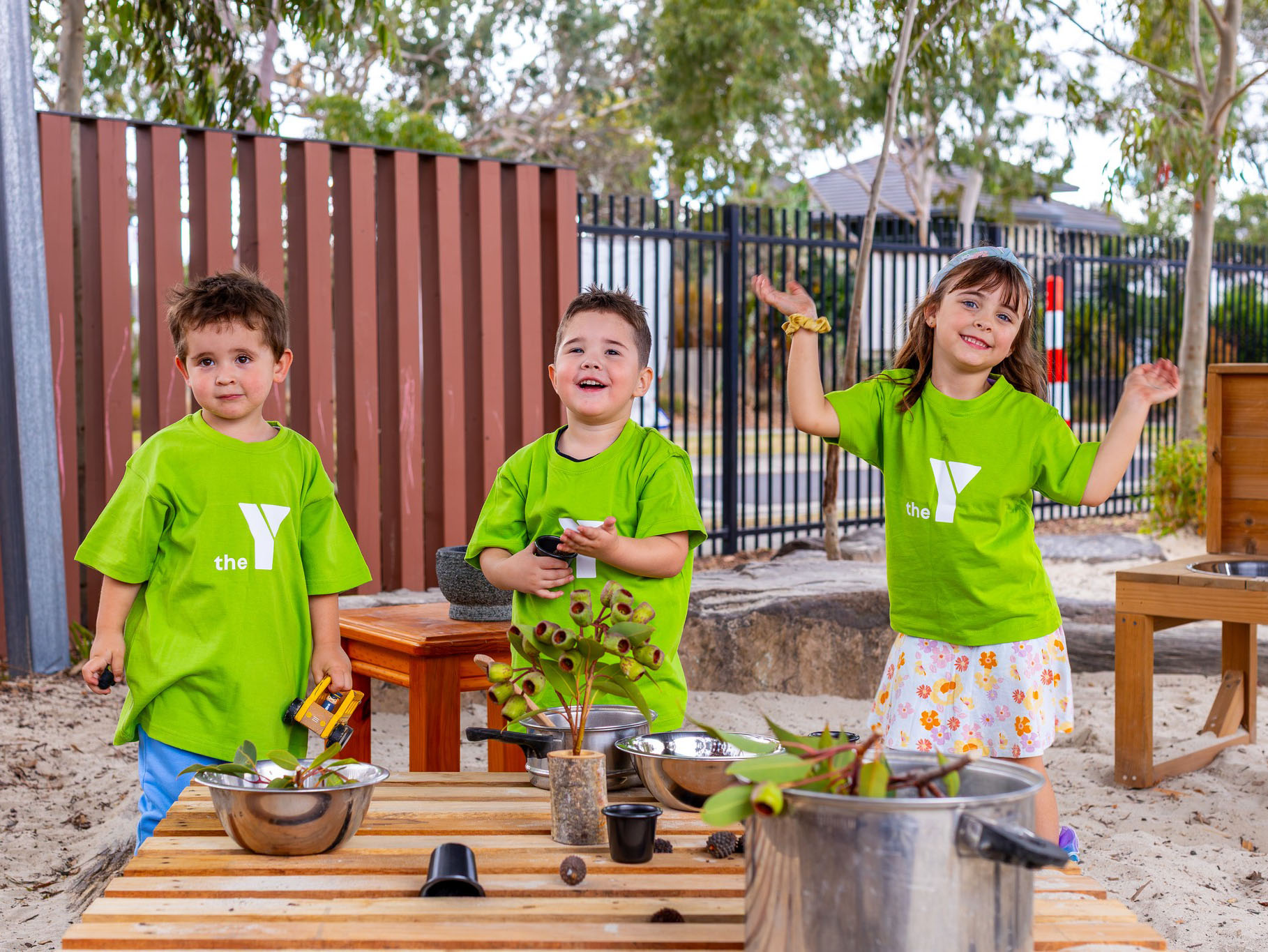Young children are constantly exploring, learning and evolving during their early years, and activities like yoga are a great way to support their development. It’s fun, playful and provides many emotional, physical and social benefits.
While children’s yoga takes inspiration from traditional adult yoga, it’s adapted to suit their abilities and needs. For example, movements are simplified to make it easier for children to learn.
At our early learning centres, we have embraced the transformative power of yoga for children.
Suparna, an educator at our Wyndham Vale Centre, explains:
As part of our daily curriculum, we incorporate yoga and mindfulness activities that promote self-regulation, body awareness, and emotional balance, equipping children with the tools they need to thrive in both body and mind.
In this blog, we explore five key benefits of yoga in early childhood. We also provide examples of these benefits in action at the Y. Keep reading to see how yoga helps to nurture healthier, happier and more confident kids!

1. Yoga boosts emotional wellbeing
Yoga is an excellent way to help children regulate their emotions as it provides them with methods to self-soothe in their daily lives.
For example, children’s yoga can include deep breathing exercises, mindfulness activities and positive affirmations. These practices give children ways to approach challenges with calm and resilience, while managing big feelings like frustration, fear or sadness.
Example in action:
At Wyndham Vale Early Learning Centre, children took part in an ANZAC Day-themed yoga session which included uplifting affirmations like ‘I am brave’, ‘I am strong’ and ‘I am peaceful’. Empowering phrases like these can help improve children’s confidence and emotional expression.
2. Yoga improves physical health
Yoga is more than a series of poses; it’s a workout wrapped in fun and creativity. For young children, physical movement is key to developing their gross motor skills (like running, jumping, or balancing) and fine motor skills (like handling small objects).
Yoga poses such as the tree pose, downward dog and balancing positions actively improve flexibility, strength and coordination, which sets the foundation for lifelong physical health. Importantly, these movements are framed in playful ways, keeping kids engaged and excited.
Example in action:
Balancing on one leg as a flamingo or curling up like a turtle allows kids to build core strength and improve their posture. Playful yet purposeful movements ensure that yoga is never “exercise” in the ordinary sense but something to look forward to!
3. Yoga sharpens cognitive and communication skills
Yoga teaches children to focus, listen and follow instructions, which helps sharpen their cognitive functioning and communication skills. Time spent practising yoga also encourages creativity through imaginative play, as physical poses are often combined with storytelling elements. This encourages children to develop their imagination and express themselves.
Example in action:
During our yoga session at Wyndham Vale, our educators incorporated ANZAC-Day themed elements to engage the children and encourage listening and comprehension.
For instance, children discussed the bravery and strength of the soldiers and practised various warrior poses that embodied the ANZAC spirit. This provided a wonderful opportunity for children to practise mindfulness and body control, while also communicating their thoughts and ideas.
4. Yoga teaches social skills and kindness
Yoga naturally builds a sense of community, providing opportunities for connection while teaching values like kindness, patience and empathy.
During group yoga sessions, children may support one another in paired activities or participate in guided group discussions reflecting on themes such as sharing or helping others. These collaborative experiences encourage children to form positive relationships and build trust.
Example in action:
While yoga can be performed alone, the yoga sessions at our early learning centres are fun group experiences. Children learn to support, encourage and respect one another. Many sessions also include discussions where children can share their thoughts and listen to others. This creates a caring, supportive and enriching atmosphere for all children.
5. Yoga encourages mindfulness and calmness
Yoga is a naturally peaceful and relaxing activity. Simple yoga and mindfulness practices like guided breathing, belly breathing and imagining a favourite place can help kids feel grounded and calm. This makes it easier for them to self-regulate and stay centred even in moments of stress.
Example in action:
During our recent yoga session at Wyndham Vale, children reflected on the courage of ANZAC soldiers with a moment of silence, accompanied by deep belly breathing and a fun breathing exercise using fabric poppy flowers. This activity encouraged mindfulness in a creative and age-appropriate way, while reinforcing the importance of pausing to reflect.
What are some fun yoga poses for kids?
Now you know all about the benefits of yoga for children, you might be eager to try some poses at home! Here are some simple poses you can try with your child, many of which we perform in our yoga sessions at the Y.
- Cat-cow stretch: Encourages flexibility in the spine.
- Tree pose: Helps with balance and focus.
- Downward dog: Builds strength in the upper body.
- Butterfly pose: Improves flexibility in the hips.
- Child’s pose: Provides a calming, restful stretch.
- Happy baby pose: Great for stretching and relaxation.
Giving children the tools to thrive
Yoga and mindfulness offer more than just physical health benefits. They build confidence, creativity, concentration and a sense of belonging in young children. By weaving these practices into the daily lives of kids, we’re setting a foundation for resilience, empathy and self-awareness that carries into adulthood.
Interested in exploring how yoga can enrich your child’s early learning experience? Enquire today to learn more about our inspiring early learning programs.


